Have Astronomers Found Alien Megastructures After All? (No, Probably Not)
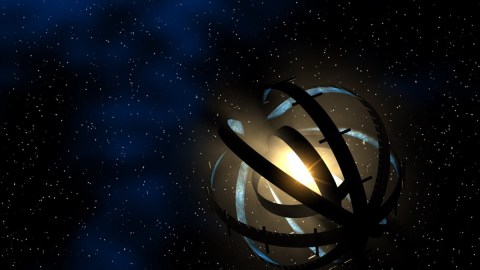
And here’s the reason why, despite all you may have heard.
“Thou shalt not embarrass thyself and thy colleagues by claiming false planets.” –Bill Cochran
Late last year, one of the stars that NASA’s Kepler mission was observing made headlines for having a very unusual signal around it. Rather than a standard planet-like signal, it saw something we couldn’t explain: huge quantities of blocked light in varying amounts. Immediately, the speculation ran rampant, including from Penn State astronomy professor Jason Wright, who noted that the five separate large dips in the light, which did not occur at regular intervals, might be something far better than planets, comets, dust or even an ultra-massive ringed system.
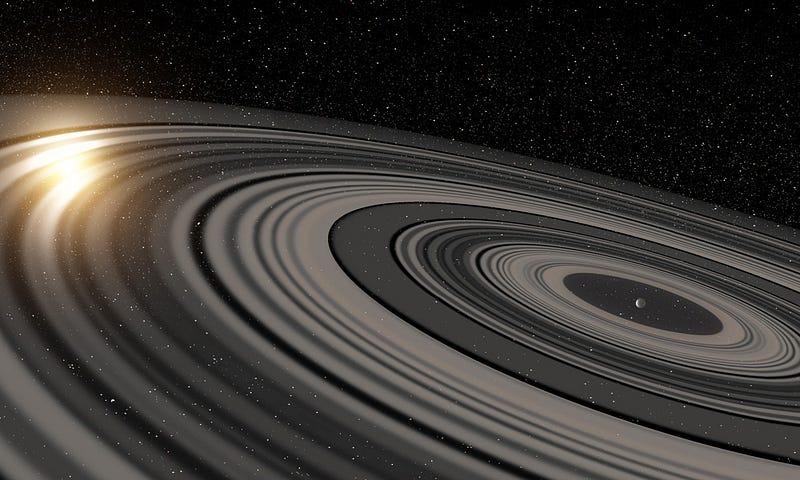
It might be evidence of aliens building gigantic structures around their own star to harness its energy, and we might be seeing evidence of a work-in-progress.
Could this be right? Let’s take a deep look at the evidence and see. When we look out at the stars in our Milky Way, there are a few telltale signatures of planets around other stars. In particular, there are two main pathways we can use to identify them:
- Use the transit method, where we measure the amount of light from a star over a long period, noting any periodic dips that appear due to another world passing between the line-of-sight that our telescopes make with that star.
- Use the stellar wobble method, where we measure the periodic motion of the parent star towards-and-away-from our eyes, where the relative red-and-blueshifts over a particular period tell us the masses and orbital radii of any worlds around that star.
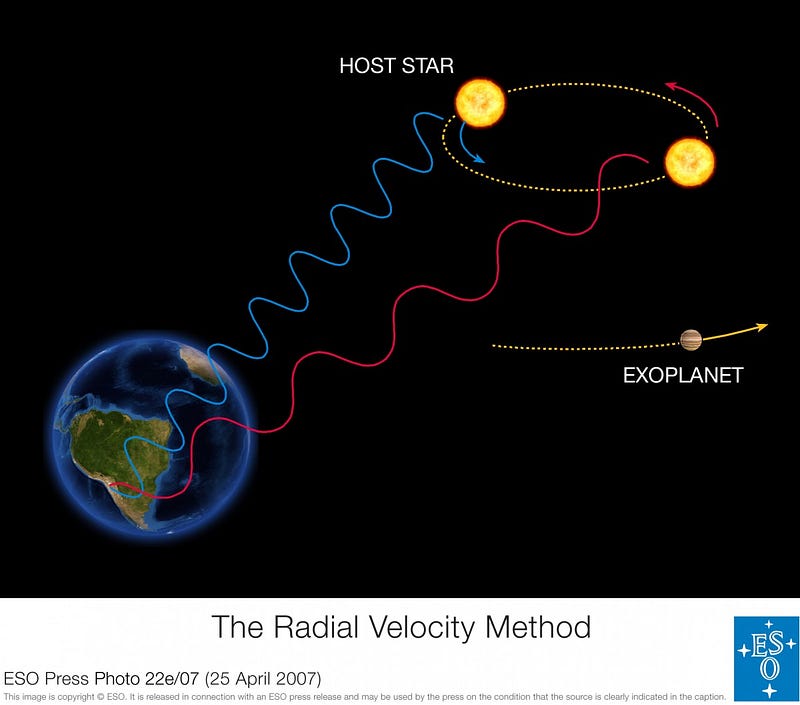
But every once in a while, one of these methods will show us something funny about a star. In particular, the transit method normally shows a periodic dip in the brightness of a star very regularly — as regular as the orbit of the Earth around the Sun — and of a magnitude that’s no more than about 1% the parents star’s brightness. This makes sense when you consider that even Jupiter, the largest planet in our Solar System, is only about 10% the physical diameter of the Sun, meaning that the size of its disc, as seen from afar, block only about 1% of the Sun’s disk and hence, its light.

This is the case for almost all of the planets discovered by NASA’s Kepler spacecraft. While observing some 150,000 stars over a period of a few years, it’s discovered thousands of candidate planets by exactly this method. The first (and easiest) ones to discover were the most massive ones that orbited close in to the lowest-mass parent stars, as they:
- were more likely to pass in front of the star’s line-of-sight with respect to us,
- the most massive planets blocked more light than the less massive ones,
- the less massive stars had a higher percentage of their light blocked by a comparably sized planet,
- and the closer in a planet orbits, the more “transits” we could build up in the data in order to try and tease out the signal.
The result is a set of planetary candidates that were initially skewed towards favoring these types of worlds. But as time went on, we were able to capture many outer and smaller worlds, including a few that were Earth-sized (or even smaller!) and in potentially habitable environments around their stars.
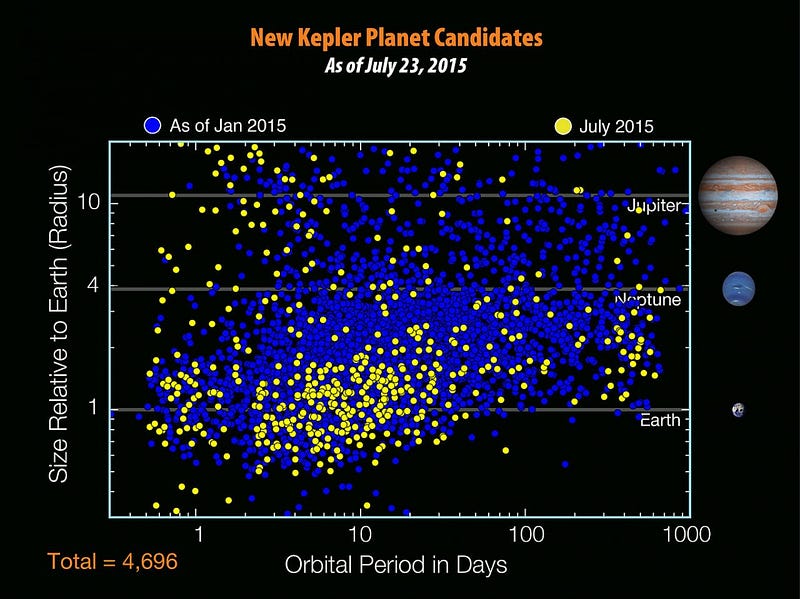
These represent the “normal” stars with planetary candidates around them. But there are a few curiosities in the data, where the apparent dips in brightness are one (or more of the following):
- very large, with dips not only greater than 1–2%, but potentially even greater than 10%,
- irregular, or without the periodic signal we’re used to seeing from planets,
- with a strange “profile,” where it doesn’t escalate to block a maximum amount of light, stay there, and then smoothly and rapidly return to normal,
- and very long period for the observed “dip” in brightness, where the explanation of a single, close-in planet is ruled out.
In particular, one anomalous star — KIC 8462852 — is of particular interest these days.
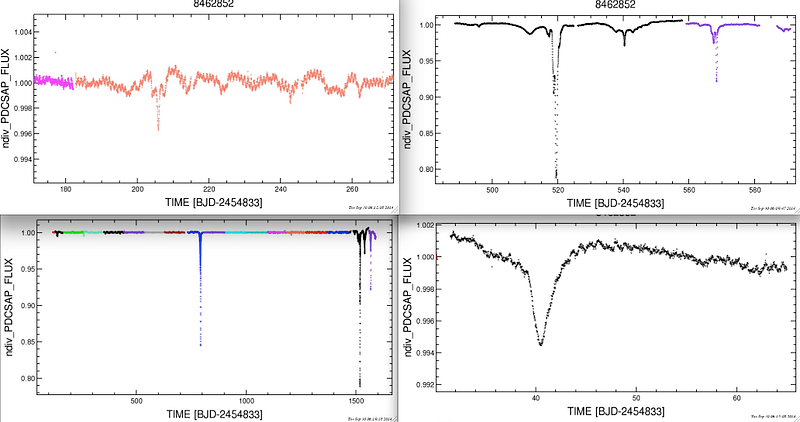
It exhibits all of these characteristics, and doesn’t seem to yield to any of the standard observational explanations which have solved mysteries like this in the past. For instance:
- a single large-size object transiting across the face of the star from interstellar space could block the light temporarily at an arbitrary magnitude, but wouldn’t recur.
- A protoplanetary disk would have large sets of light-blocking clumps, but would appear at periodic intervals and would show up in infrared data sets.
- A binary companion could cause large dips of two different magnitudes — one for when the primary passed in front of the secondary and one when the secondary passed in front of the primary — but again this would recur with a very regular period.
- Or a chunk of planetary or cometary debris could cause a large “cloud” of material to transit across the face of the star, dimming it severely.
We’ve found some interesting things out about the star system with follow-up observations, but the mystery only thickens.
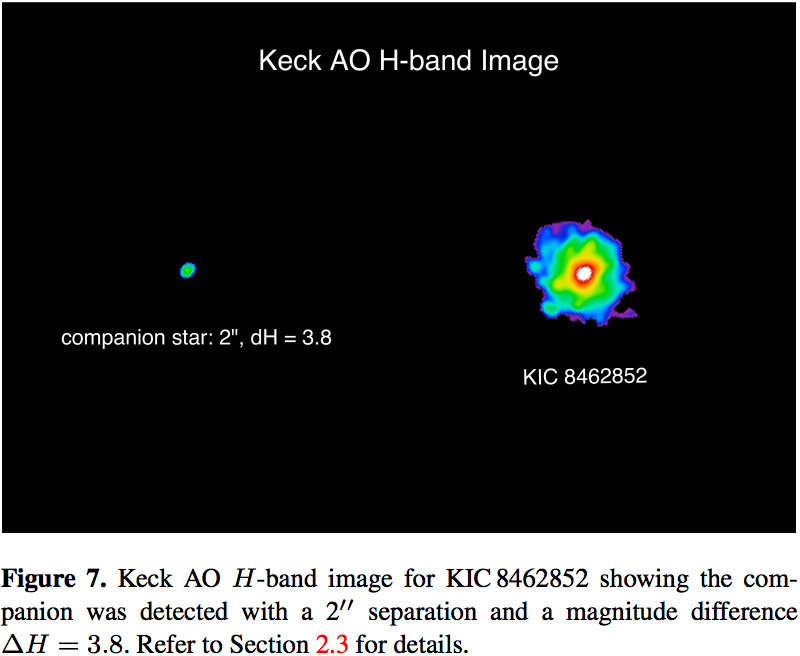
There is a binary companion to this star, but it was detected at a separation of 2 arc-seconds. At the estimated distance to this star of ~1,500 light years, this means the two stars orbit each other at no less than a distance of around 900 times the Earth-Sun distance. If they do eclipse one another, they do so with a period of many thousands of years. It’s possible that there are closer-in binaries to either (or each) of these stars that cause an even bigger dip, but these two stars couldn’t cause the signal.
We’ve imaged this star system in both the infrared and the ultraviolet as well, and that’s sufficient to rule out the protoplanetary disk scenario.
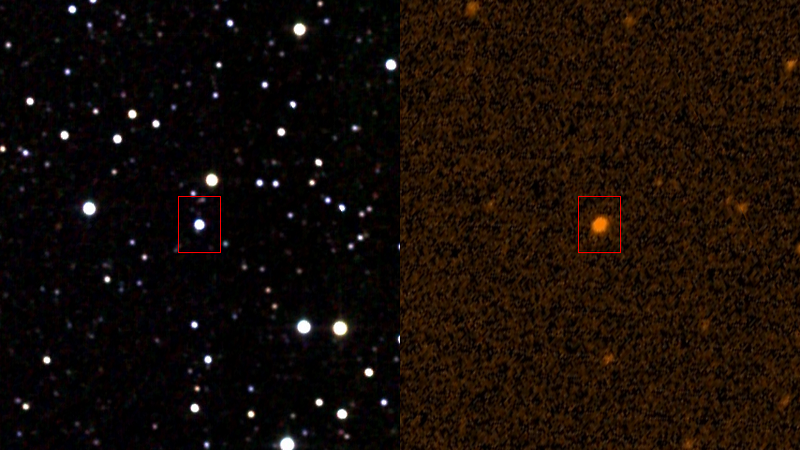
Infrared observations show a complete lack of any protoplanetary disk structure. This doesn’t necessarily mean there isn’t debris that’s very close in to the star system, such as a large, thick equivalent to our asteroid belt, but there’s no traditional protoplanetary disk that extends for a large distance. This is expected; the star exhibits properties (from its light) that tells us it’s at least hundreds of millions of years old, and very unlikely to still have a disk associated with star-and-planet formation around it.
The lack of an outer disk combined with an old star disfavors the presence of an inner disk, though. For example, the star Eta Corvi — which exhibits similar optical properties — does have excess infrared radiation, as an outer disk is though to replenish an inner disk which would be swallowed on shorter timescales. In other words, Eta Corvi is constantly being bombarded by comets, which causes its bizarre properties.

But this shouldn’t be the case for KIC 8462852. Does this mean it’s time to go back to the original, sensational explanation: Alien Megastructures?
If you do, that’s a terrible way to do science! Yes, what was previously thought to be the best prior explanation — the comet swarm explanation — is now disfavored thanks to follow-up data. But many follow-ups were done, including:
- a SETI search for radio signals, yielding nothing of note.
- infrared searches for excess emission, yielding nothing of note.
- an archival study of photographic plates from the 19th and 20th century, showing that the star’s brightness has faded by approximately 20% over the past century.
That last one is interesting!
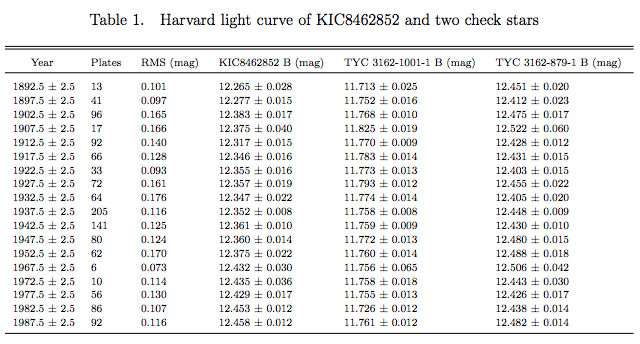
Already, there were other conventional possibilities besides aliens, including interstellar dust, ringed planets, an eclipsing binary (or trinary, or more) system, etc. But if the star truly is fading over time, that could be an indication that it’s doing something very odd, like accreting interstellar material unevenly or having one of its planets experience a disintegration event. (But if you did bet on the aliens, it could be that the “megastructure” is getting more and more complete, and blocking progressively larger amounts of light over that time.)
We’ve seen moons in our Solar System that have giant craters on them nearly the size of the entire moon; its conceivable that an even larger impact onto a larger planet (Earth, super-Earth or even Neptune-sized) could have destroyed it entirely, causing a debris ring (or series of rings) in the inner Solar System that periodically transits the star.
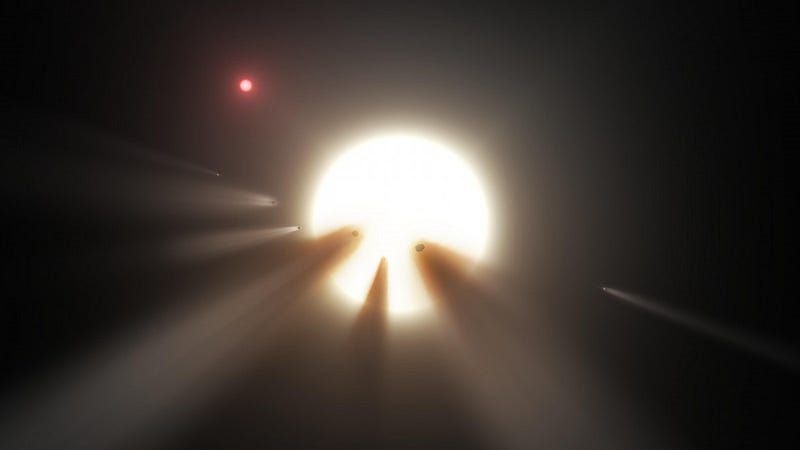
We’ve often found that — when it comes to unexpected astronomical signals — our imaginations run away with us, leading us to immediately jump to conclusions about our greatest hopes and/or fears, like the existence of sentient aliens accessible to us. But the real Universe, every time thus far, has shown itself to be more diverse, complex, and rich in phenomena than we had previously realized, including the existence of quasars, pulsars, exoplanets and more. We haven’t yet ruled out the possibility of alien megastructures, but what we’re most likely seeing is a new type of natural phenomena whose origin is yet unknown. Follow-up observations, particularly those scheduled for 2017, when another major “transit” event is scheduled to occur, should teach us a whole lot more.
Until then, keep an open mind, but don’t let your imagination run away with you!
Leave your comments on our forum, and check out our first book: Beyond The Galaxy, available now, as well as our reward-rich Patreon campaign!





